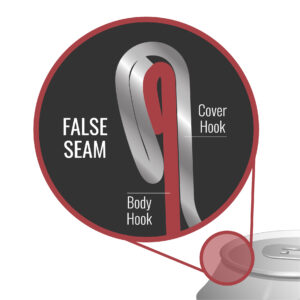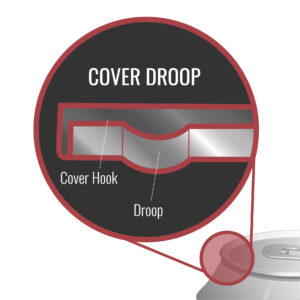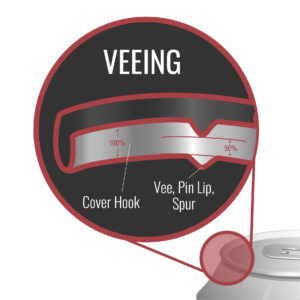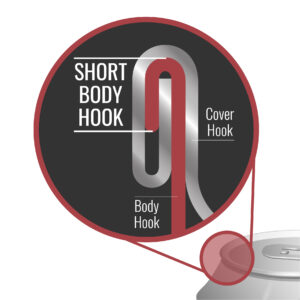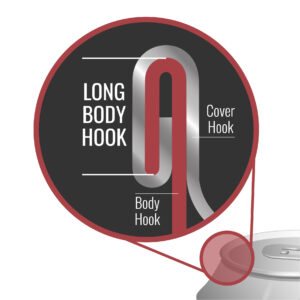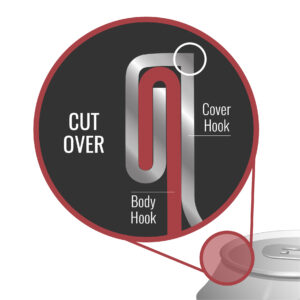The Unique Strengths of Family-Owned Businesses
December 17, 2024
Why Companies Like RSS MACLIN Stand Out
When you choose to work with a family-owned business like RSS MACLIN, you’re not just getting a service provider—you’re gaining a partner whose name and reputation are woven into the success of your business. There’s a level of care and commitment that often sets them apart, and it’s rooted in three distinct advantages that only family-owned companies can truly offer.
1. The Reputation of a Family’s Name Continues with Every Client
In a family-owned business, the company’s reputation doesn’t just belong to the brand—it belongs to the family itself. For RSS MACLIN, this means that the family’s name and legacy are tied to the success and satisfaction of every can and beverage manufacturer they serve. Their reputation isn’t abstract; it’s personal. This level of accountability ensures that every job, every seamer audit, and every can-seamer repair is treated with the utmost importance because each satisfied customer enhances the family’s legacy.
2. Personal Responsibility for the Client’s Success
At RSS MACLIN, there’s a deep sense of personal responsibility for their clients. Unlike large corporations, where customers may feel like just another number, a family-owned business fosters lasting relationships with beverage manufacturer clients. The family behind the business has a direct investment in the outcome of their work, and it shows in the quality of service provided. This personal stake in a client’s success ensures a higher level of attention to detail, timeliness, and a proactive approach to preventing can-seamer issues before they arise.
3. Decision-Makers Driven by Positive Change, Not Just Profit
Many family-owned businesses were started by individuals who entered the can seamer industry not for financial gain but to make a meaningful difference. At RSS MACLIN, the decision-makers didn’t come into the can seamer industry just to make a profit—they wanted to bring about change and improve the processes they work with. This mindset fosters innovation, creativity, and a genuine desire to help their clients succeed. Their focus is on doing what’s right for the client and the industry, not just on the bottom line.
The Family-Owned Difference
Businesses like RSS MACLIN offer a refreshing alternative in an increasingly corporate world. Clients benefit from a company that holds itself to the highest standards, not just because it’s good for business but also because it’s good for its name. The personal responsibility they take for every client’s success, combined with a drive to improve the can seamer industry, makes family-owned businesses a powerful choice for companies seeking more than just a vendor—they’re looking for a partner.
When it comes to maintaining your production line or ensuring your seamer operates at peak performance, remember that the family behind RSS MACLIN is working just as hard to ensure their name remains synonymous with quality and excellence. In the end, for them, it’s not just about the job—it’s about building a legacy. Contact us to learn about how a family business can help you get to your bottom line.
Beverage Packaging & Production Line: The Heart of the Facility
December 16, 2024
In any manufacturing facility, the production line is the heart that keeps everything moving. It’s the core engine driving output, efficiency, and ultimately, the bottom line. As a beverage packaging company, beverage production being efficient is crucial for RSS MACLIN. When the production line is running smoothly, every department from the lab to logistics can operate in harmony. But when machines are neglected or inefficiencies creep in, the impact ripples far beyond just the line itself, affecting every aspect of the facility. Let’s dive into how the reduction of efficiency in the production line can disrupt other departments and create costly consequences.
1. Impact on the Lab
The lab plays a crucial role in monitoring product quality, ensuring that every batch meets strict standards before it hits the market. When the production line isn’t operating efficiently, inconsistent production can lead to variations in product quality. A malfunctioning machine could produce inconsistent fills, seal issues, or contamination risks, forcing the lab to work overtime to identify and solve problems.
Not only does this slow down the lab’s ability to test and release products, but it can also result in more failed batches, rework, or scrapping of materials. This increases pressure on the lab team to identify the root cause, leading to more frequent testing and additional resources spent on quality assurance.
2. Strain on Labor Resources
Reduced efficiency on the production line often means more time spent troubleshooting and fixing issues. This puts a strain on labor resources, requiring staff to shift their focus from their regular duties to addressing machine problems. Skilled technicians may be pulled away from routine maintenance to deal with breakdowns, causing delays in other critical tasks.
Over time, this creates a snowball effect. Teams might need to work overtime, which drives up labor costs and increases the cost per case produced. To compensate for lost productivity, additional staff may even need to be hired temporarily. This added labor investment puts further pressure on budgets, making each case more expensive to produce. Furthermore, the stress of dealing with unexpected machine downtime can lower morale, leading to burnout or high turnover among workers, which can compound staffing challenges and increase training costs for new employees.
3. Disruptions in Warehousing and Logistics
A production line that isn’t running at full capacity has a significant impact on warehousing and logistics, especially in industries like beverage packaging. When production slows or stops, finished goods don’t move through the supply chain as expected, leading to backlogs and potential stock shortages. Warehousing space that should be optimized for storing raw materials and finished products can quickly become overcrowded with incomplete batches or faulty goods awaiting rework.
Additionally, logistics partners rely on a consistent schedule to move products to distributors or retailers. Production delays can lead to missed shipping deadlines, higher storage costs, and strained relationships with key logistics providers. In some cases, to meet distribution requirements, facilities may need to source additional product from other sites, adding significant costs and logistical complexity. The longer the production line remains inefficient, the more these disruptions compound, creating costly inefficiencies and impacting overall profitability throughout the supply chain. This is why preventative maintenance should be prioritized to minimize production line delays.
4. Material Handling and Ingredient Storage
An efficient production line ensures that raw materials and ingredients are used promptly and in optimal conditions. However, when machine issues cause delays, materials often sit in storage for longer than intended. This is particularly problematic for ingredients with shorter shelf lives, as delays can lead to spoilage or degradation, resulting in wasted materials and financial losses.
Moreover, inefficient material handling due to machine breakdowns can create bottlenecks in the movement of goods from storage to production. This results in a chaotic flow, where materials are either not available when needed or are left idle, tying up valuable storage space. However, in the unexpected scenario of a machine breakdown, RSS MACLIN has emergency services to help minimize downtime for your business.
Conclusion: Preventative Maintenance is Key
Neglecting the maintenance of production line machines doesn’t just hurt the line itself—it affects every part of the facility, from the lab to warehousing and logistics. By ensuring regular audits and preventative maintenance programs, facilities can avoid these disruptions and ensure smooth, efficient operations across all departments. Remember, the health of your production line is the health of your entire facility.
Just as the body can’t survive without a healthy heart pumping life through it, a facility cannot function without its production line running smoothly. Keeping this “heart” strong and efficient ensures that every department thrives, driving the facility toward sustained success.
Reach out to RSS Maclin today about any questions, concerns, or to learn more about our beverage product line and our services!
In today’s fast-paced production world, making smart decisions about equipment and services is essential. When it comes to your can seamer machine, impartiality from service providers matters more than you might think. While OEMs (Original Equipment Manufacturers) provide trusted equipment like that of seamer equipment, their guidance can sometimes push unnecessary purchases. This is where impartial, third-party can-seamer auditors like RSS MACLIN can offer a fresh perspective. Instead of simply following turnkey solutions that may not align with your specific needs, an independent expert helps you make more informed choices.
The Problem with Traditional Turnkey Solutions
Turnkey solutions often present a one-size-fits-all approach, which can be convenient, but at what cost? These packages can bundle repairs, replacements, and services that you may not need, pushing facilities to purchase expensive parts or upgrades just because they come from the OEM. Brand loyalty can play into this, where facilities trust the OEM because of name recognition rather than an objective evaluation of what’s best for their production line.
Honest Insight, Not a Paycheck
An impartial party, like RSS MACLIN, is not tied to a specific brand or manufacturer. This means that when they conduct an audit or perform can-seamer equipment repairs, their goal is not to upsell you on parts or services that may not be necessary. Instead, they focus on what’s best for your production and efficiency. With over 30% more inspection points than the OEM, RSS MACLIN identifies potential problems sooner, giving you the power to address issues before they become costly downtime.
Flexible Maintenance with Modular Repairs
A rigid maintenance plan might not fit the dynamic nature of your production schedule. RSS MACLIN recognizes that no two operations are the same, which is why they offer flexible maintenance with modular repairs. This approach allows your facility to perform maintenance on individual components as needed rather than undertaking large, sweeping overhauls that can disrupt production.
The Impact of Reputation Over Brand Loyalty
If RSS MACLIN has brand loyalty, it’s not because of a name, but because of an impactful reputation. Their reputation for thoroughness, attention to detail, and a tailored approach to each facility’s needs ensures they’re trusted based on results, not labels. While OEMs may provide great equipment, a third-party auditor can offer a more objective analysis, saving you from unnecessary purchases and making sure your investments are truly benefiting your production line.
Benefits of Choosing RSS MACLIN
Unbiased Recommendations: RSS MACLIN’s can-seamer audits focus on what your facility actually needs, not on selling more products.
Comprehensive Inspections: With 30% more inspection points, they catch issues that OEM inspections might miss.
Reduced Downtime: By identifying and resolving issues earlier, you avoid unexpected production stops and save time and money.
Tailored Solutions: Whether you have a small seamer or a large operation, RSS MACLIN believes every facility deserves the same high level of service, offering personalized solutions for your unique setup.
Flexible Maintenance: Modular repairs allow for focused maintenance, keeping your line optimized without unnecessary overhauls or disruptions to your production schedule.
When it comes to maintaining and auditing your seamer, the value of an impartial party cannot be understated. Trusting in an honest, third-party auditor like RSS MACLIN means smarter spending, fewer unnecessary parts, and a production line that stays running smoothly—without being locked into brand-driven choices.
The Importance of Annual Mechanical Maintenance Checks for Seamers
October 22, 2024
Regular can-seamer maintenance is critical to ensuring the optimal performance and longevity of your can seamer. A well-maintained machine not only minimizes downtime but also helps avoid costly repairs and production losses. Annual mechanical maintenance checks are essential to keep your can seamer in top working condition. Below is a breakdown of key areas to focus on during these routine inspections.
Lower Chuck Assembly
The Lower Chuck Assembly plays a crucial role in the seaming process. Here’s what to check:
- Check Spring Pressure: The Lower Chuck Spring must be set correctly and adjusted according to the can manufacturer’s specifications.
- Verify Lower Lifter Plane: Ensure the Lower Chuck Plate dimensions are within .002 of an inch across all plates using a dial indicator for precise measurements.
- Adjust the Drop-Off: Measure the drop-off from the Lower Chuck Plate to the Can Feed Table Wear Plate. This should be set to a .010-inch drop-off using 22L816 Shims for optimal performance.
- Pin Height Adjustment: Pin Height between the Lower Chuck Plate and the Seaming Chuck must be checked and adjusted +- .002.
Feed Turret
The Feed Turret ensures smooth can handling and efficient operation. Here’s what to focus on:
- Clean and Inspect the Turret: Remove the Undercover Gassing Feed Turret following the steps in the Service Manual. Separate the plate and clean the inside thoroughly.
- Distribution Ring Inspection: Inspect the Manifold Ring Assembly for any signs of wear or cracks that will contribute to higher gas consumption.
- Inspect the Oil Seal: Make sure the Oil Seal in the Plate is in good condition to avoid any leaks or inefficiencies.
- Review Conditions of Gas Line: Examine for drying, cracking, or loose connections from the facility connection to the gassing manifold.
Motor Drive Pulleys
Motor Drive Pulleys are responsible for the smooth operation of the seamer. Key checks include:
- Alignment Check: Verify the pulley alignment between the Drive and Driven Pulleys to prevent unnecessary strain on the system.
- Motor Drive Shaft Run-Out: Ensure the Motor Drive Shaft run-out is within the acceptable range to avoid uneven wear.
- Drive Belt Condition: Inspect the Drive Belts for cracks or any signs of wear. Replace as necessary.
- Secure Fasteners: Tighten all fasteners and taper locks that hold the pulleys to the shafting to prevent loosening during operation.
In-Motion Timer & Clutch Assembly
The Clutch and Timer Housing ensure precise control during operation. To keep these components in good shape:
- Inspect Clutch Housing: Remove the Filler Clutch Cover and check the gap between the clutch plates (reference OEM specifications), as well as any signs of wear.
- Check Clutch Coil Resistance: Unplug the electrical connector and test the resistance between the Clutch Coil terminals. It should read between 11 and 13 ohms.
- Lubrication: Ensure all pipe fittings are secure and tight and confirm no oil is passing through seals on entire drive.
- In-Motion Timer Adjustment: Confirm that you are able to advance and retard the filler using in-motion timer.
- Timing: Verify the transfer point from filler to seamer feedchain is timed properly based on the centerline of the filler.
Cover Feed System
Ensure smooth lid handling by inspecting the following:
- Separator Disc & Knife Condition: Check the Separator Disc, Knife, Bearings, Seals, and O-Rings for wear.
Conclusion
Regular annual maintenance checks of your can seamer’s critical components can save time, money, and headaches in the long run. By following these steps and using the detailed guidelines in your Service Manual, you can ensure your seamer operates at peak efficiency, reducing the risk of costly downtime and production errors.
For expert assistance, don’t hesitate to contact a certified seamer technician for audits and repairs to keep your machine running smoothly.
The Importance of Quarterly Mechanical Maintenance Checks for Seamers
October 15, 2024
Conducting quarterly can-seamer maintenance audits is vital to increasing your O.E.E. (Overall Equipment Effectiveness). Skipping proper maintenance can hinder performance in your production line. Discover why it is important to conduct these quarterly checks so you can continue to operate at peak operational efficiency.
Quarterly Maintenance Checks
Comprehensive Can-Seamer Cleaning
1. Remove all material waste and perform seamer CIP
Hand polish tooling using roll polisher from RSS MACLIN
Residue buildup on the can-seamer head can cause misalignment during the sealing process, potentially damaging the can and making it unusable. Cleaning the can-seamer head is important because it not only prevents contamination, but it contributes to food safety, preventing downtime, and reducing waste.
Conveyor System
Residue on the conveyor system disrupts the flow of cans through the seaming station, causing jams and production downtime for cleanup. Addressing the excess buildup allows you to prevent more cans from being damaged, spillage of products, and prevent slipping hazards.
2. Clean/Inspect Seamer Rollers
The primary function of the first op roll is to create the initial kick radius of the cover and body hook. The second op roll irons it out. Wear, tear, or damage to these rollers can compromise the seal, and cause leaking and spoilage.
Calibration Check
1. Ensure Can Height and Diameter Settings are Accurate
One of the most crucial checks is to make sure the settings on the can seamer reflect the correct height and diameter. If the settings are set to the incorrect measurements, this could cause improper sealing and damage the cans — deeming them unusable.
2. Calibration Adjustment
Regular recalibration allows for the proper sealing and maintaining product quality.
Review Wear Parts Inventory
1. Assess the Condition of Spare Parts
Ask yourself: “Will the seamer parts I have on hand be effective if a replacement is needed?” Even if you answered yes, confirming you have spare seamer parts that can easily be replaced and are functional is important to making sure your can seamer is working at optimal performance.
2. Order Replacements as Needed
If you do not have replacements available, we recommend having one to two in stock for emergencies.
Schedule Can-Seamer Maintenance
Quarterly can-seamer maintenance is a necessary step to a functioning can seamer. If you are in need an audit or line maintenance, we can help you address problems before big issues arise.
Contact us to request a quote for service or to learn more about how we can support your can-seamer maintenance needs.
How to Perform a Visual Can-Seam Analysis
September 27, 2024
When ensuring the quality and safety of canned products, performing a thorough visual can-seam analysis is necessary. The seam of a can is where the lid and body join to create an airtight seal. This protects the product from contamination and spoilage, which is why it’s important to maintain quality and regularly check the can seam.
To perform a proper visual can-seam analysis, here’s a clear step-by-step breakdown:
1. Initial Visual Inspection:
- Take your can and inspect the seam visually for any obvious damage.
- Look closely around the seam for concerns such as:
- Droops
- Incomplete seams
- Knocked down flanges
2. Seam Thickness and Height Measurements:
- Measure the seam thickness at three different places around the can.
- Measure the seam height in three locations as well.
- Ensure you are familiar with the manufacturer’s specifications for both the can and the lid when performing checks on the seam thickness and seam height.
3. Countersink Check:
- Perform a countersink depth check using the appropriate tool, following manufacturer specs.
4. Using OneVision for Inspection:
- Turn on OneVision to perform a more detailed computer-assisted inspection.
- Follow these steps:
- Calibration: Begin by calibrating the machine.
- Check Countersink: Start the inspection by checking the countersink depth.
- Thickness Measurement: Measure the seam thickness in two places instead of three.
- Seam Height: Ensure seam height is measured, focusing on the two points you selected.
- Remember to notch the can in two places for the next steps.
5. Advanced Inspection with OneVision:
- Once notched, measure:
- Cover hook
- Body hook
- Overlap
- Seam height
- Run these measurements on two cans for consistency.
6. Seam Strip Inspection:
- Take an uncut can that’s been emptied and remove the tab.
- Use the OneVision seam stripper and sideslips to cut the notch and strip the seam.
- The cover hook should detach easily.
- Visually inspect for any pressure ridge and assess the overall seam quality.
7. Wrinkle Rating:
- Once the cover hook is off, evaluate the wrinkle rating for potential can-seam defects.
- Following these steps will help ensure that the can seam is intact and meets manufacturing standards.
Can-Seam Analysis Training
Become a can-seamer expert by getting the training you need to improve your production line, saving you time and money. View our open time slots for training classes on the training calendar.
Making Sure Your Product Stays True from Production to the Shelf
September 23, 2024
Ensuring the quality of your product from production to the shelf is crucial for maintaining customer satisfaction and brand reputation. Several factors play a significant role in this process, including levels of CO2 in beverages, Total Package Oxygen (TPO), microbial checks, and taste testing checks. Let’s explore how each of these elements influences product quality and product shelf life.
The Role of CO2 in Product Quality
Carbon dioxide (CO2) is a critical component in many beverages, particularly carbonated drinks. Proper levels of CO2 in beverages ensure the desired fizziness and play a crucial role in preserving the product’s taste and shelf life.
Key Benefits of Optimal CO2 Levels:
Consistency: Ensures every batch of your product has the same level of carbonation, providing a uniform experience for the consumer.
Shelf Life: Helps to preserve the product by inhibiting the growth of certain spoilage organisms.
Taste: Maintains the intended flavor profile, which is essential for customer satisfaction.
The Importance of Total Package Oxygen (TPO)
Total package oxygen (TPO) refers to the amount of oxygen present in the package, which can significantly affect the product’s quality. Oxygen can cause oxidation, leading to off-flavors and a shorter shelf life. Read this blog to find out how your can-seam quality affects TPO.
Key Benefits of Controlling TPO:
Preservation: Lower total package oxygen levels help in preserving the freshness and quality of the product.
Flavor Integrity: Prevents oxidation-related off-flavors, ensuring the product tastes as intended.
Extended Shelf Life: Reduces spoilage and extends the product’s shelf life.
Microbial Checks for Safety and Quality
Microbial contamination can lead to spoilage and pose serious health risks to consumers. Regular microbial checks are essential to ensure that the product is safe and of high quality.
Key Benefits of Microbial Checks:
Safety: Ensures the product is free from harmful microorganisms, protecting consumer health.
Quality Control: Helps to maintain high quality by preventing spoilage and off-flavors caused by microbial growth.
Compliance: Ensures the product meets regulatory standards and industry guidelines.
Taste Testing Checks for Consumer Satisfaction
Taste testing is a critical step in the quality assurance process. It involves evaluating the product’s flavor profile to ensure it meets the desired standards and consumer expectations.
Key Benefits of Taste Testing:
Consistency: Ensures that each batch of the product has the same taste, maintaining brand consistency.
Customer Satisfaction: Helps to deliver a product that meets or exceeds consumer expectations, leading to higher satisfaction and loyalty.
Quality Assurance: Identifies any deviations in the flavor profile, allowing for corrective actions to be taken before the product reaches the market.
Conclusion
Maintaining product quality from production to the shelf is a complex but essential process. By closely monitoring CO2 in beverages, controlling total package oxygen, conducting regular microbial checks, and performing thorough taste testing, you can ensure that your product remains true to its intended quality. These practices not only enhance the product’s shelf life and taste but also ensure consumer safety and satisfaction, ultimately contributing to the success and reputation of your brand.
Can Seamer Service Calendar
August 20, 2024
Keeping Your Line Running Smoothly
Can seamers are arguably the most integral part of the packaging process. To ensure optimal performance on the can-seamer, it’s essential to have your equipment serviced regularly. As your guide to all things can seamer-related, we’ve compiled a recommended service schedule for your can seamer line. Together, we can keep your seamer equipment running smoothly and avoid costly downtime.
Annual Maintenance Must-Haves
Choosing to invest in preventative maintenance each year can make the difference between a smoothly running production line and a line riddled with problems like hold product, unscheduled downtime, and production loss. Emergency service and parts procurement costs are always increased in emergency situations. Annual maintenance provides an opportunity to assess the overall condition of the machine, identify potential issues, and establish a baseline for subsequent maintenance tasks and reduces unscheduled downtime.
Below, you’ll find several maintenance must-haves that we recommend tending to each year.
Professional Seam Analysis
During a professional seam analysis, we will examine the quality of the can seam and assess the performance of the seaming process. An RSS MACLIN technician will evaluate can defects such as wrinkles, flanges, or leakers. We will also perform a seam analysis including checking for the seam’s thickness, width, and shape to ensure it meets the required specifications. This analysis provides valuable insights into the overall performance of the can seamer and –checks that all seams meet the can and lid manufact specifications. Not only that, but the analysis highlights any areas that require short- and long-term attention.
Oil Analysis
It’s important to analyze your oil quarterly. This helps identify areas that may not be receiving adequate lubrication, or the source of oil contaminates which may in turn affect the performance and longevity of the machine. Oil is the lifeblood of your equipment. Water and contamination reduce the effectiveness of your lubricant. Long term, this increases the longevity of the machine.
Comprehensive Audit
Each year, it’s important to review the entire seamer in an annual comprehensive audit to see if there are any factors to may lead to seamer downtime.
Quarterly Maintenance
Modular Maintenance
Because of increased schedules and reduced maintenance time, Micro-audits give you an opportunity to make repairs in a minimum window vs a line outage. Sometimes your annual audit and micro audit aren’t enough. When you’ve got machine assembly problems that are outside of OEM specification (e.g., worn gears), we can help construct a modular maintenance plan to fit around your production schedule and address any remaining needs.
Micro Audit
While the entire line gets reviewed annually, it’s a good idea to schedule a micro audit each quarter. This ensures that the assemblies are configured properly. Any deviation or wear in the assemblies can affect the seam quality and may eventually compromise the integrity of the seam. If we find any problem areas, you can count on us to generate a parts list and procure the parts you need. -talk about modulars. We have the machine broken down into 12 modulars, we can help you figure out
Set-Up Audit
In addition to micro audits and modular maintenance, we recommend conducting a set-up audit every 4-6 weeks to review timing, guide rail setups, and other basic adjustments. Guide rails, which are the parts that come into contact with cans during transfer within the machine, play a crucial role in maintaining proper alignment and seam integrity. A more frequent set-up audit helps address any misalignments or adjustments to prevent avoidable downtime and ensure consistent performance.
On-Site Seam Analysis
Professional seam checks can be done about once a month. Instead of reactively adjusting for each damaged seam, we’ll bring a technician on-site. We’ll meet with you to review last month’s seam data and provide recommendations to reduce the need for constant adjustments.
Daily Maintenance
Regular Seam Checks
When the quality of your product depends so heavily on your can seams, it’s imperative to check them regularly. We recommend checking your can seam twice each shift so that you can prevent minor irregularities from creating larger quality assurance issues.
Need Additional Training or SOP Support?
Not sure what to measure in a can-seam check? Sign up for can-seamer training. With over 75 years of experience, we’ve got some knowledge to share. But sometimes knowledge isn’t enough. You also need to know how to put it into practice in a routine way. When you need to improve your entire process, we can help develop a Standard Operating Procedure, or SOP.
Log of Can Counts
Financial audits are a good reason to count your cans, but an even better reason is to gain clarity on how your can count affects your tooling and machine assemblies. When your equipment has processed 40 million cans per station, it’s likely time to schedule a professional tooling change and micro audit. At RSS MACLIN, we always check this during an annual audit, but it’s good for you to keep a running tally each day.
Schedule Can-Seamer Service Today!
When you schedule can-seamer service with us at RSS MACLIN, we’ll provide an on-site audit you can trust and much more! We’ll also provide the following:
- Parts List Generation
- Parts Procurement
- Maintenance & Repair
- Can-Seamer Training
Don’t risk the high cost of downtime on your packaging line. Call the can-seamer experts at RSS MACLIN to schedule preventive maintenance today.
Essential Daily Can Seamer Checks
August 12, 2024
Maintaining a can seamer is crucial for ensuring the smooth operation of your production line and the quality of your final product. Regular maintenance and daily checks can help identify and address common issues before they become major problems.
Here are some key areas to focus on during your daily checks:
Ensure Adequate Oil
One of the simplest yet most crucial checks is to make sure your can seamer machine is properly lubricated. Adequate oil levels are essential for the smooth operation of the machine’s moving parts. Running a seamer with insufficient lubrication or contaminated oil due to failing seals can lead to increased friction, wear, and eventually, costly repairs.
Check for Excessive End-Play in Rolls
End-play refers to the lateral movement of the seaming rolls. Excessive end-play can lead to inconsistent seaming and potential product defects. The max should be .002. During your daily checks, ensure that the rolls have minimal lateral movement. If you notice excessive end-play, it may be necessary to adjust or replace the rolls to maintain optimal performance.
Inspect Chucks for Wear and Damage
Chucks are critical components in the can seaming process, responsible for holding the can in place during seaming. Daily inspections should include checking for any signs of coating wear, cracks, or other damage. Worn or damaged chucks can compromise the seal, leading to potential product contamination or spoilage.
Verify Knockout Pads
Knockout pads play a vital role in removing the can from the seamer after the seaming process. It’s important to check that these pads are spinning properly and are free of obstructions. A malfunctioning knockout pad can cause jams or damage to the cans, disrupting production and increasing the likelihood of downtime. Make sure to check that pads are free of damage or wear.
Check Can Holding Chucks for Spring Pressure and Sticking
Can chucks must maintain the right amount of spring pressure to hold cans securely during the seaming process. By hand or using a pry bar, check the chucks to ensure they are functioning correctly. If the chucks are sticking or the spring pressure is insufficient, it can lead to improper sealing and product defects.
Creating good practices like this is very tedious and must be adopted by all company cultures to create the necessary consistency in the products they produce.
Reach Out to RSS MACLIN
RSS MACLIN offers services that help you ensure peak performance. Our total line support offerings include preventative maintenance checks, seam checks, and can seamer audits. We also offer can-seam and can-seamer training, so your team can address issues promptly with the right attention.
Contact us to request a quote for service or to find out what we can do for your can-seaming machinery and your team.
Understanding Double Seam Can Defects: Types and Their Impacts
July 22, 2024
In the world of packaging, particularly in the food and beverage industry, the integrity of a can’s seam is crucial. The seam, where the can’s body and end are joined, must be perfect to ensure product safety, quality, and longevity. However, defects with a double seam are common issues that can compromise the contents. In this blog, we’ll explore the various types of can-seam defects, their causes, and how they can impact both manufacturers and consumers.
Types of Double Seam Defects
1. Incomplete Seam (False Seam)
What is it?
An incomplete double seam, often referred to as a false seam, occurs when the seam is not fully formed, leading to gaps between the can body and the end.
Causes:
- Misalignment of the can body and end during the seaming process
- Insufficient pressure during the seaming operation
- Worn or improperly adjusted seaming rolls
Impact:
This defect can lead to leakage, contamination, and compromised product integrity. For consumers, it poses health risks, while manufacturers face recalls and brand damage.
2. Droop
What is it?
Droop is a defect where the metal at the seam’s edge hangs downward, creating an uneven edge.
Causes:
- Excessive metal being fed into the seam
- Improper adjustment of seaming rolls
- Incorrect can end size for the body
Impact:
While droop might not always lead to immediate leakage, it can create weak points that may rupture under pressure, leading to potential contamination and product spoilage.
3. Vee
What is it?
A vee defect appears as a V-shaped gap or indentation in the double seam, typically at the seam’s side.
Causes:
- Incorrect alignment of the seaming rolls
- Excessive or insufficient pressure during seaming
- Damaged seaming tools
Impact:
This defect significantly increases the risk of leakage and spoilage, potentially leading to consumer complaints and financial losses due to returned products.
Cover Hook Defects
What is it?
When the cover hook exceeds or is below the Can manufacturer specification listed on the OEM Specifications sheet.
Causes:
- Misadjusted seaming rolls, primarily 1st operation
- Worn or failed 1st operation rolls
- Worn-out seaming chuck
- Excessively long body hook
- Material issue
Impact:
Cover hook defects can lead to unbalanced or fractured seams resulting in leakage or holding product.
Body Hook Defects
What is it?
When the body hook exceeds or is below the can manufacturer specification listed on the OEM specifications sheet.
Causes:
- Total machine pin height
- Individual station pin height (seaming chuck or lifter chuck plane)
- Excessively long cover hook
- Tight or loose 1st operation roll
- Spring pressure
- Material
Impact:
Body hook defects lead to fractured seams, unbalanced seams, and low overlap resulting in leakage or hold product
5. Seam Cutover
What is it?
Seam cutover is a condition where the seaming tool cuts into the double seam, creating a sharp edge and thinning the metal.
Causes:
- Excessive compound
- Improperly adjusted tooling (often an excessively tight 2nd operation or worn-out 1st)
- Overly hard seaming rolls
Impact:
Cutovers can cause immediate leakage and present a safety hazard to consumers due to sharp edges. For manufacturers, this defect leads to significant waste and potential liability issues.
Ensuring Seam Integrity
In conclusion, understanding and addressing the defects of a double seam is vital for the packaging industry. RSS MACLIN provides support in the maintenance of can seamer machines, proper training for operators, and stringent quality control measures that can help mitigate these issues. By recognizing the types and causes of these defects, manufacturers can take proactive steps to ensure their products remain safe, high-quality, and reliable for consumers.
If your business needs assistance with a can seam, double seam or can seamer machine, please contact us today.
